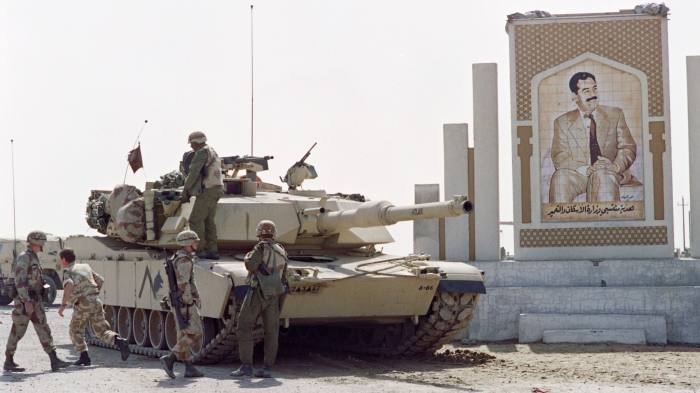The Abrams demonstrates the pitfalls of Washington’s overcomplicated defence procurement system

US soldiers fighting on an Abrams tank named Red Ace during the 1991 Gulf war had to be meticulous about keeping the desert sand out of its gas turbine engine.
With a lot of air being pushed through the engine, “there were big concerns about it ingesting sand and not working”, said John Nagl, a US Army War College professor who led Red Ace’s platoon and later served in a tank battalion task force in the Iraq war that started in 2003.
The platoon “spent a whole lot of time literally banging our air filters”, he added.
Nagl’s experience is not unique. For decades, armoured units of the US Army have lamented the long logistical tail needed to maintain the Abrams’ warfighting capability in combat zones. It was those concerns that prompted the counterintuitive briefings by the Pentagon last month, in which senior US defence officials repeatedly maligned the Abrams after requests from Berlin and Kyiv that the tank be sent to Ukraine.
Despite these concerns, the US will send 31 M1 Abrams tanks to Ukraine, the equivalent of one Ukrainian tank battalion, after Kyiv succeeded in its campaign to convince allies to provide western-made tanks. Ukraine will get roughly twice as many European-made tanks, primarily the German Leopard 2, which are viewed by military experts as the best match for the defending army.
The intense maintenance and logistics needed to keep the Abrams battle-ready make it less ideal for foreign armies such as Ukraine’s, which simply needs weapons that work well. But it is also a symptom of an American defence procurement system that, critics argue, repeatedly overcomplicates its big military platforms, loading them up with pet technologies that drive up costs and make them difficult to maintain.
“There’s a bias in the Pentagon to buy the most exquisite defence [systems]” but other countries “just need whatever can get the job done,” said Josh Kirshner, a managing director at Beacon Global Strategies, a strategic advisory firm.
Sometimes countries such as Ukraine, which needs what is useful on the battlefield now, “don’t want the Cadillac of defence items, they just need ‘good enough’ gear”. Military experts say the Leopard and the Abrams achieve roughly equivalent results.
Keep reading here.